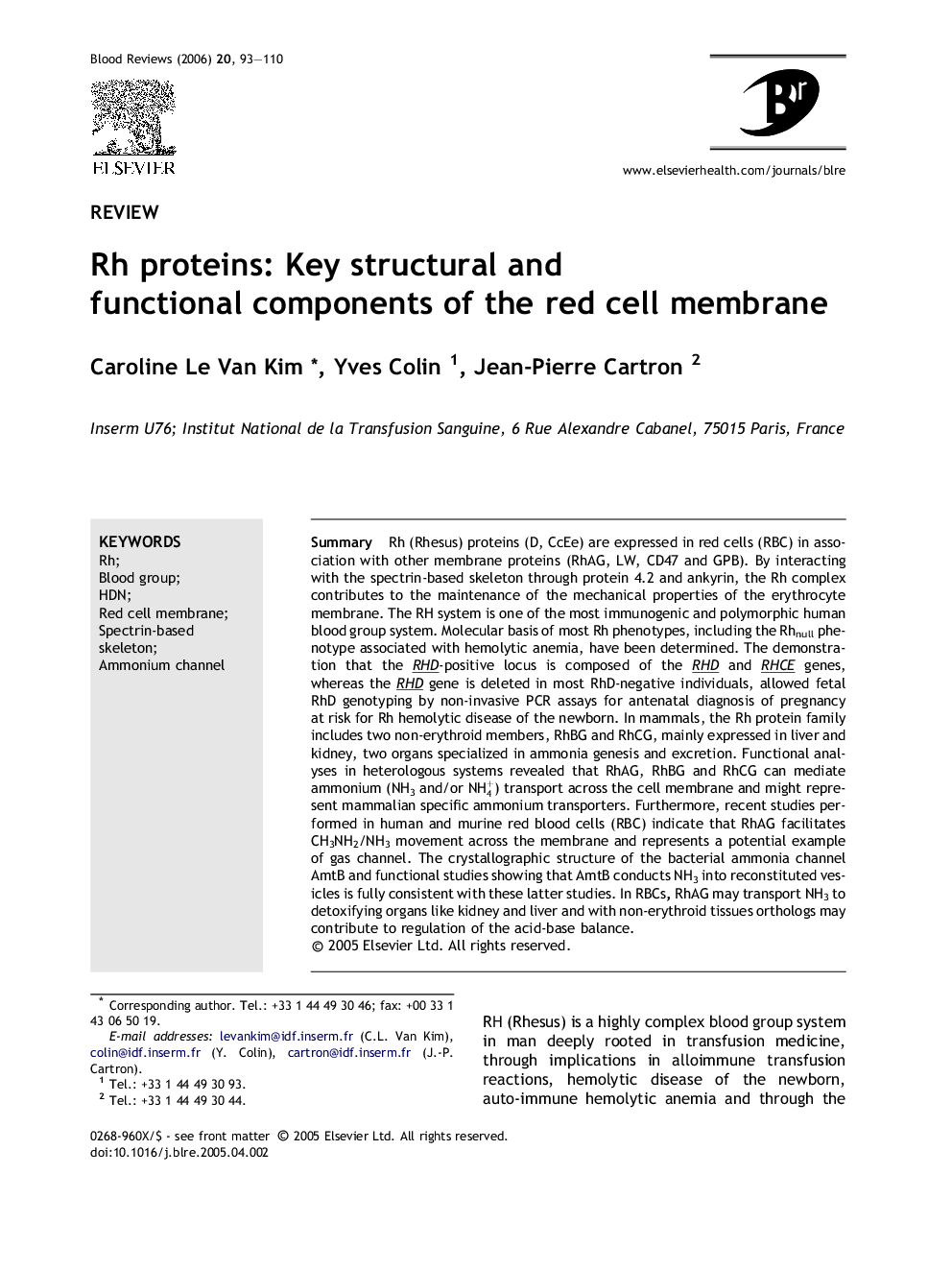| کد مقاله | کد نشریه | سال انتشار | مقاله انگلیسی | نسخه تمام متن |
|---|---|---|---|---|
| 2106687 | 1083601 | 2006 | 18 صفحه PDF | دانلود رایگان |

Rh (Rhesus) proteins (D, CcEe) are expressed in red cells (RBC) in association with other membrane proteins (RhAG, LW, CD47 and GPB). By interacting with the spectrin-based skeleton through protein 4.2 and ankyrin, the Rh complex contributes to the maintenance of the mechanical properties of the erythrocyte membrane. The RH system is one of the most immunogenic and polymorphic human blood group system. Molecular basis of most Rh phenotypes, including the Rhnull phenotype associated with hemolytic anemia, have been determined. The demonstration that the RHD-positive locus is composed of the RHD and RHCE genes, whereas the RHD gene is deleted in most RhD-negative individuals, allowed fetal RhD genotyping by non-invasive PCR assays for antenatal diagnosis of pregnancy at risk for Rh hemolytic disease of the newborn. In mammals, the Rh protein family includes two non-erythroid members, RhBG and RhCG, mainly expressed in liver and kidney, two organs specialized in ammonia genesis and excretion. Functional analyses in heterologous systems revealed that RhAG, RhBG and RhCG can mediate ammonium (NH3 and/or NH4+) transport across the cell membrane and might represent mammalian specific ammonium transporters. Furthermore, recent studies performed in human and murine red blood cells (RBC) indicate that RhAG facilitates CH3NH2/NH3 movement across the membrane and represents a potential example of gas channel. The crystallographic structure of the bacterial ammonia channel AmtB and functional studies showing that AmtB conducts NH3 into reconstituted vesicles is fully consistent with these latter studies. In RBCs, RhAG may transport NH3 to detoxifying organs like kidney and liver and with non-erythroid tissues orthologs may contribute to regulation of the acid-base balance.
Journal: Blood Reviews - Volume 20, Issue 2, March 2006, Pages 93–110